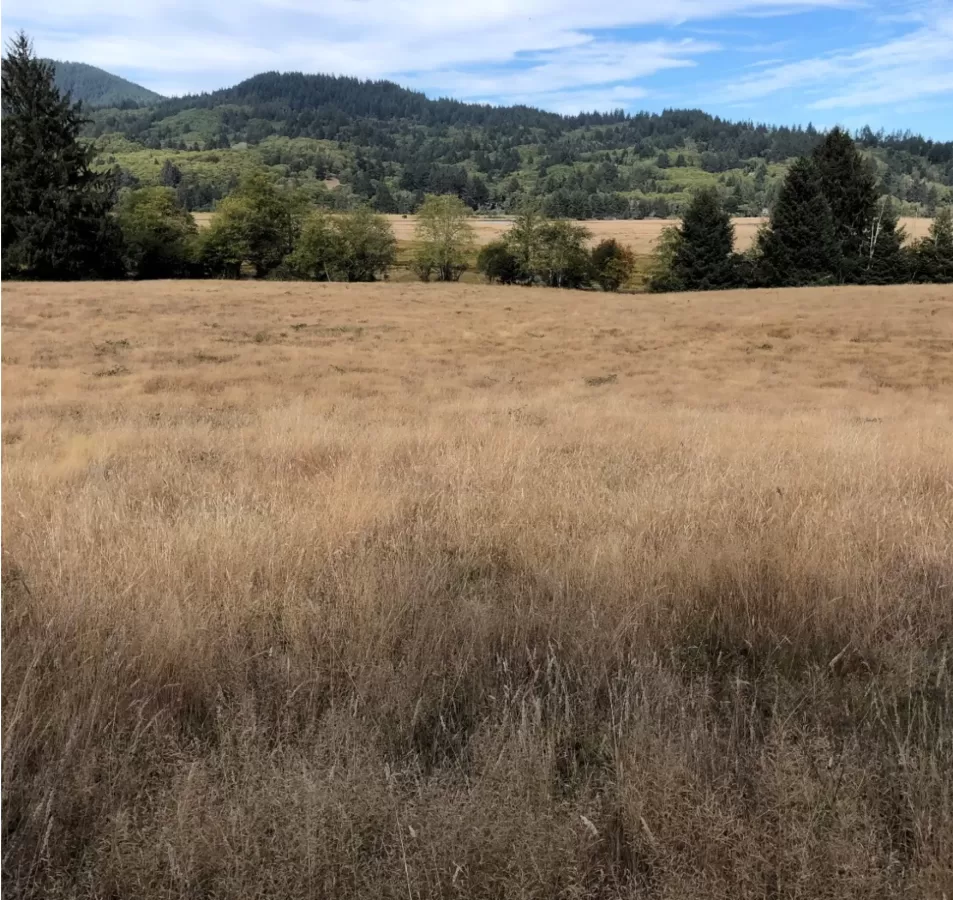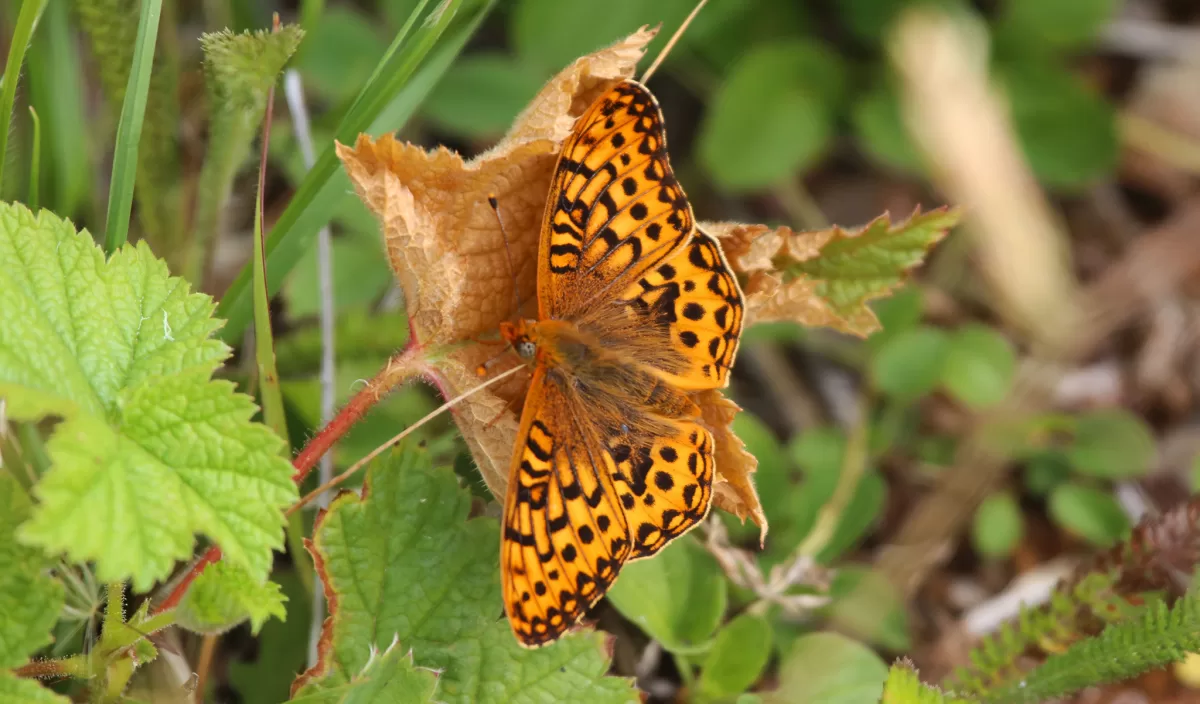Next time you visit Westwind, you may notice something different. The field at Fraser Farm, where you may have parked last time you visited Westwind, is currently brown. This change in color marks the beginning of a five-year process to restore the area around Fraser Farm to native coastal prairie habitat.
What Is Happening
We have applied an initial round of broad-spectrum herbicide at Fraser Farm. Spraying has caused a rapid die-off of the non-native grasses and Himalayan Blackberry that were covering the area. We decided to use herbicides after consultation with our conservation advisors, Institute for Applied Ecology (IAE). This approach will minimize disruption to the soil and allow us to progress more quickly with our conservation work. We have selected herbicides that will not harm local wildlife and specifically target the non-native plants we want to remove.
Next time you see Fraser Farm, it may look slightly different, but don’t fret; it just means conservation is in progress.

Future Conservation
It will take a couple of years to fully remove non-native species from Fraser Farm. The farm area will look brown during this time. We can begin to seed once we have successfully removed non-native species from Fraser Farm. We will be seeding the farm with native species that emphasize the Oregon Silverspot Butterfly Habitat. These species include Early Blue Violet, Oregon Coast Paintbrush, and Narrow Goldenrod. Seeds will be collected from the Iris Meadow conservation site and supplied by regional seed partners.
The restoration of Fraser Farm is scheduled to take five years. In the end, we will restore an area currently occupied by non-native species and reinvigorate it with native species that support endangered wildlife. You can learn more about the restoration of Fraser Farm and Iris Meadow here.

